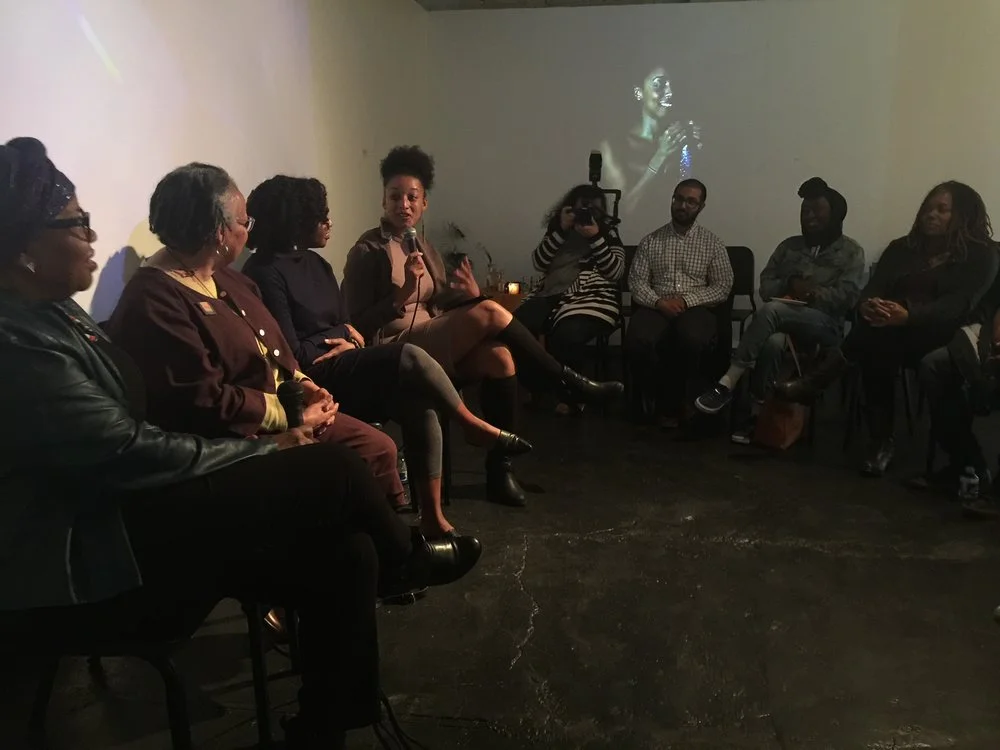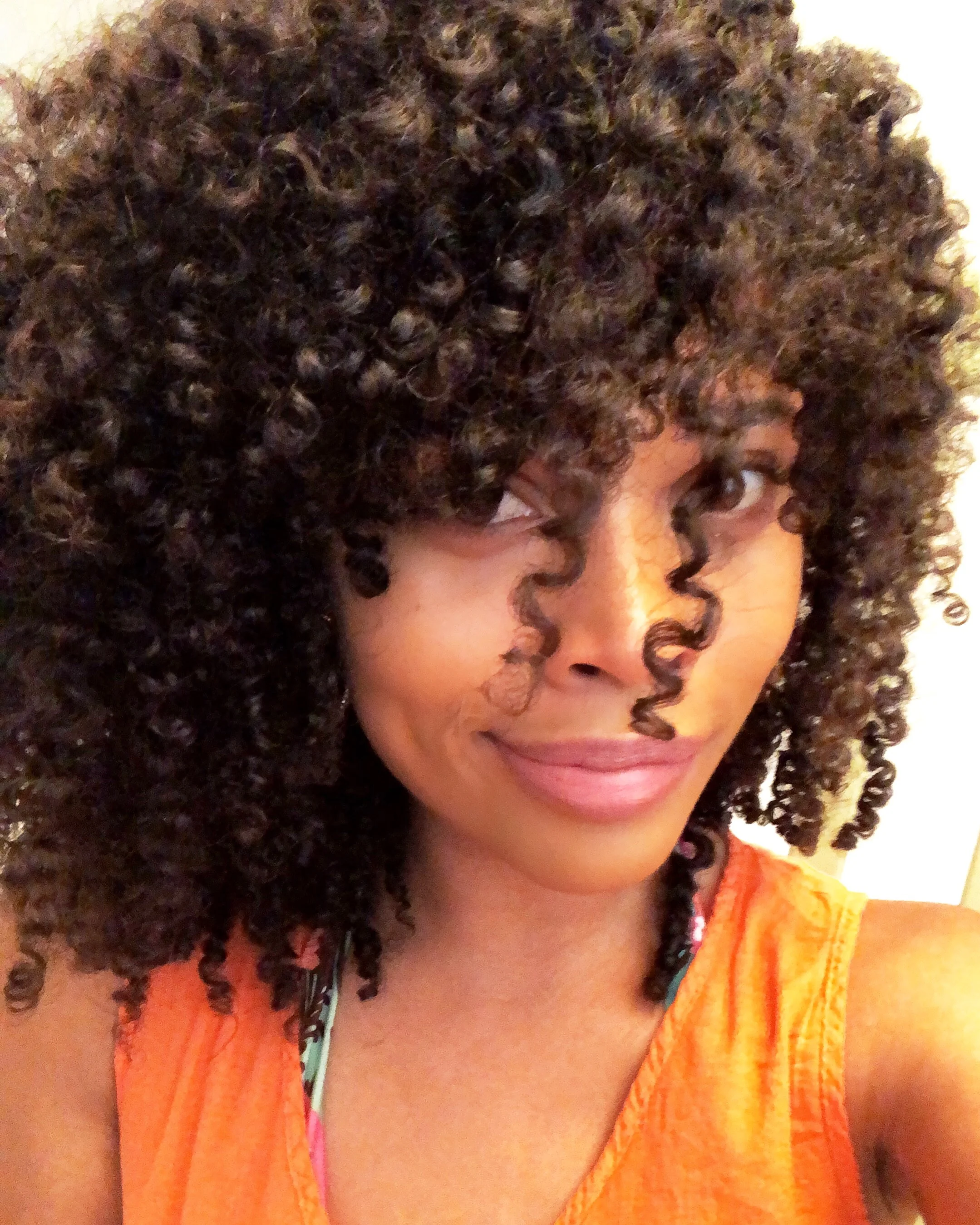"The Center is Black:" Ashara Ekundayo Gallery is the Afrofuturist Space Centering Oakland's Black Women
As the birthplace of the Black Panther Party, Oakland, California has always been regarded as a city brimming with unapologetically Black history and culture. However, similar to countless urban areas across the country, the vibrant culture which has been birthed and celebrated by Blacks and Latinos is now under considerable threat, as white affluent residents and detached businesses increasingly infiltrate the area. At this critical moment, Black community members, creatives and activists are engaged in an ongoing conversation around the reclamation and preservation of space and culture. Among these individuals are Black women artists like Ashara Ekundayo, who has been a lively force within the art community for over 29 years, much of it spent dedicated to showcasing the work of Bay Area POC artists.
Ashara is the cultural strategist, curator, consultant, social entrepreneur, and the recent proud owner of an exhibition and events venue in Uptown Oakland which exclusively showcases Black women’s art. The space and her namesake, Ashara Ekundayo Gallery, is afrofuturist, community-oriented, and is a dynamic reminder that Black women artists belong in Oakland. During a phone interview, I caught up with the self-proclaimed “Riot Baby” on resisting displacement, the state of Black visibility, and the significance of centering Blackness.
Last week you were preparing for First Friday, which was originally established to create a community space for POC artists downtown. How are you creating intentional space in the midst of Oakland’s gentrification?
Before there was Oakland First Friday there was the Art Murmur collaborative which was composed of a few art galleries in the uptown arts district, which is where my gallery is located. And First Friday started some years later when some other arts organizations and the Koreatown neighborhood association decided they were going to start blocking off the street and inviting vendors and entrepreneurs and folks to also party on First Friday at the same time the galleries were open. So when there’s criticism that comes from black artists or the black creative community the impression is twofold. One is there are very few galleries that feature nonwhite artists. The other situation around First Friday is that for a while you mostly saw that they would block off the street in the area where the white galleries were which is the Uptown district. And so there were groups of us, and I was included at the time when we first started doing first Fridays, that would block off a different part of the street and have black artists and artists of color in performance, vending, having our own kind of First Friday. Saying, “You dont get to own this - white artists y’all don’t get to own this, without us. This is Oakland we’re going to do this too. We’re going to celebrate this culture as well because we defined it.” Over the last six years it’s been tricky because the gentrification reality in the Bay Area is violent, it is severe. Particularly in Oakland and San Francisco. The arts district is also the area where the majority of people who are unhoused live. So it started shifting the definition around whose culture is it.
The conversation around displacement and gentrification came up when we opened that space on 14th and Broadway, literally around the block from my new gallery. A multiracial group, three of whom were Black women, one Latina women, a white women, a brown man and a white man founded this company. Some folks in the community wanted to take us to task and say that we were the gentrifiers, that we had taken this space that had been abandoned and empty for over ten years.
How has this work led you to the decision to establish Ashara Ekundayo Gallery?
The center narrative of the conversation of our coworking community was creative art practice, so the art and creative piece was a center of our brand. In that space I was curating art from all Bay Area artists, mostly women and several people who it was their first public exhibition. When I decided to transition out of my chief creative officer of my company, and started to do full time creative strategy consulting, this space appeared for me and allowed for me to do what I had always wanted to do - which was to create the opportunity for Black women’s art to be seen, amplified and explored, and increased in value. The conversation we’re having now in this small space is one that goes deep verses wide. This gallery space is unique in the Bay Area, unique in the United States and it has to be as black people as black women particularly. Our voices and our lives and our ability to live in the Bay Area is in deep, deep jeopardy that those of us that have the power, privilege, and ability to hold space that is sacred and creative, that we do that.
What I have to do is to curate, which is to acquire, to display an exhibit and to engage and amplify.
As a curator building communal space through your work, what aspects do you consider when selecting artists to showcase?
It depends on how the show unfolds. Sometimes there’s an artist that someone has either pointed out to me or that I’ve found online. One of the things I am looking for is longevity even if you are an emerging artist and you’ve never had a solo show or you haven’t been in many shows, I’m looking for the fact that you have your own commitment and passion to your practice. One of the other things that I’m looking for is how you engage with the community around your work. I’m particularly interested in new media right now, so I’m looking for artists that can incorporate VR into their work, or they’re creating new media film pieces that perhaps coincide with some work on paper and canvas. Im really interested in the VR aspect of that whole art making sector because it’s very inaccessible to Black and Brown people in urban centers. It’s still a pretty fancy thing to go and put on a headset and enter into a virtual world, and to be able to engage your art practice through those lenses. I’m looking for conversations that artists are having around equity with their artwork. In this gallery I’m looking for ways to partner very established Black women artists with newcomer Black women artists.
I’m also looking for something that’s going to make me feel something. Whether that’s rage or excitement or pleasure, I’m looking for what my eye thinks is beautiful and beautiful not necessarily meaning by any kind of mainstream or western trappings around that. But do I see us? I’m not looking for Black women artists who are painting Black women all the time. You don’t have to be someone who is creating narratives and figurative work to be a black artist. I’m looking for beauty.
I don’t believe our stories will be told fully in any kind of equitable, truthful, righteous way by anyone but us.
We live in a society in which Black women are increasingly hip, cool, and looked up to, yet somehow our work is not being equally recognized in traditional institutions. Throughout your career in Oakland, what shifts have you seen in the ways in which Black women artists are perceived and venerated?
There’s kind of that stereotype that everyone has that Black cool, sister friend. There’s this expectation of how she’s going to dress, and how she’s going to speak, how she’s going to break it down, and all of those things that we know how to do with each other and for each other. And that white girls always need a cool Black friend to save them and to tell them the truth. What I know as an African woman is that we will tell the truth. And we see that our truth is only amplified when we tell that story, for example, of who voted for Trump. It’s like, let’s not forget that we did not vote for him so that we all understand here that we as a collective, even though we’re not homogeneous, did not vote for this person. When Black women say that we are angry and that rage is righteous. It shows up in our art, in our music, in our dance, in our poetry, in our food, in our hair. I don’t believe our stories will be told fully in any kind of equitable, truthful, righteous way by anyone but us. I don’t know if I could say I see Black women everywhere in mainstream culture, but what I see is that I continue to surround myself with more and more images and stories of us. Those of us that have power and privilege, it is incumbent upon us to create space, hold containers and feed our community.
Living in a capitalist society means, can you financially survive and thrive as a cultural worker, as a curator, as a gallerist in a society that doesn’t value spending money on art as a general norm? You see art collecting still lifted up into a place where we believe only wealthy people live. We all can become art collectors and support living artists.
What are you cultivating for the next generation of Black women artists through the work of Ekundayo Gallery?
As a business woman, I’m hoping that we can continue to open and maintain galleries, and that Black women can continue to hold spaces of power within art institutions. And as curators, administrators, creatives across the board because I actually believe we have to work across all the positions and jobs in order to maintain the actual full story around who we are and who we could be. Genuinely owning a gallery is a very expensive and difficult business to take up in the United States. What I’m hoping for Ashara Ekundayo Gallery, as well as other Black owned galleries, particularly Black women who own galleries, is that we continue to build them. It’s going to be difficult. We can think differently about how to support each other. What I’m wanting to do is to center Blackness. And bring forth this framework which is about living, breathing, loving Blackness.
I’m done comparing everything to the white institutions, to the white establishment, to the white male dominant culture because at the center is still whiteness and how we’re going to do it how they did it. I’m done. The center is Black.
Your current exhibition entitled “Particular Relativity: As the Universe, So the Soul” has just been extended through August 3rd. What can visitors expect to see at this exhibition?
"Particular Relativity: As the Universe, So the Soul"
It’s already been very deep and beautiful how community has shown up for this conversation. One, there’s four incredibly talented artists who are showing their work from across the board, in age, and in educational background. I think it’s just something that allows for you to touch different parts of your identity. And it also allows for the different elements of love. It’s an intergenerational offering, an inquiry that Black women are having around their relationship to the future and to the now.
It’s about how they want to engage in revolution.






